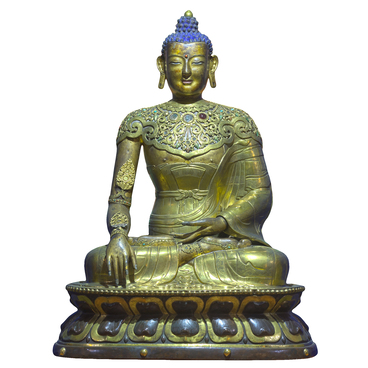The Regional Museum of Local Lore displays a bardiche — a massive iron axe with a long shaft. The tool was used by Streltsy — soldiers of the first regular Russian army from the 16th to the early 18th centuries.
The bardiche consisted of several elements. A sharpened blade was mounted on top of the ax-handle and could inflict stabbing and cutting wounds. There was a plate-string at the bottom of the blade rounded inward which was fastened to a metal or wood shaft. The blunt part of the blade, which was attached to the handle, was called a butt.
Pole-axes, common in Europe in the 10th and 11th centuries, were succeeded by bardiches. Shaft of pole-axes had different lengths. Over time, the length of their blades increased, and to prevent the axe from breaking during impact, an additional attachment was added to it. This is how the string appeared.
The name of the tool comes from the Polish word “berdysz”, which means axe. Therefore, some historians have suggested that Russian soldiers borrowed the bardiche from the Polish-Hungarian infantry. The first tools were not very large. The blade size varied from 19 to 50 centimeters. By the 17th century, the height of the axe increased, the bardiche became more elongated; it was also decorated with carved patterns.
The bardiche was an inexpensive and easy-to-use tool. In Russia, it was used not only by Streltsy, but also by the general population. Most often those were residents of border territories in the western regions, for example, in the Smolensk region.
Men without military training could scare off enemies and defend themselves using a bardiche. They grabbed the tool by the lower part of the shaft with both hands and could strike at an opponent with sweeping blows, just like with an axe. Due to the heavy and curved blade, such technique could kill the enemy.
Trained military soldiers held the bardiche in their hands in a different way. With one hand they grabbed the lower part of the shaft, and with the other — the part between the butt and the string.
Furthermore, soldiers used bardiches to shoot: they stuck the blade into the ground and placed a pishchal — a matchlock firearm similar to an arquebus — on the junction of the butt and the shaft. In those days, firearms were heavy and weighed from 5 to 8 kilograms, so it was inconvenient to shoot while holding them in hands.
When the Streltsy army was disbanded at the beginning of the 18th century, bardiches fell out of use.
The bardiche consisted of several elements. A sharpened blade was mounted on top of the ax-handle and could inflict stabbing and cutting wounds. There was a plate-string at the bottom of the blade rounded inward which was fastened to a metal or wood shaft. The blunt part of the blade, which was attached to the handle, was called a butt.
Pole-axes, common in Europe in the 10th and 11th centuries, were succeeded by bardiches. Shaft of pole-axes had different lengths. Over time, the length of their blades increased, and to prevent the axe from breaking during impact, an additional attachment was added to it. This is how the string appeared.
The name of the tool comes from the Polish word “berdysz”, which means axe. Therefore, some historians have suggested that Russian soldiers borrowed the bardiche from the Polish-Hungarian infantry. The first tools were not very large. The blade size varied from 19 to 50 centimeters. By the 17th century, the height of the axe increased, the bardiche became more elongated; it was also decorated with carved patterns.
The bardiche was an inexpensive and easy-to-use tool. In Russia, it was used not only by Streltsy, but also by the general population. Most often those were residents of border territories in the western regions, for example, in the Smolensk region.
Men without military training could scare off enemies and defend themselves using a bardiche. They grabbed the tool by the lower part of the shaft with both hands and could strike at an opponent with sweeping blows, just like with an axe. Due to the heavy and curved blade, such technique could kill the enemy.
Trained military soldiers held the bardiche in their hands in a different way. With one hand they grabbed the lower part of the shaft, and with the other — the part between the butt and the string.
Furthermore, soldiers used bardiches to shoot: they stuck the blade into the ground and placed a pishchal — a matchlock firearm similar to an arquebus — on the junction of the butt and the shaft. In those days, firearms were heavy and weighed from 5 to 8 kilograms, so it was inconvenient to shoot while holding them in hands.
When the Streltsy army was disbanded at the beginning of the 18th century, bardiches fell out of use.



